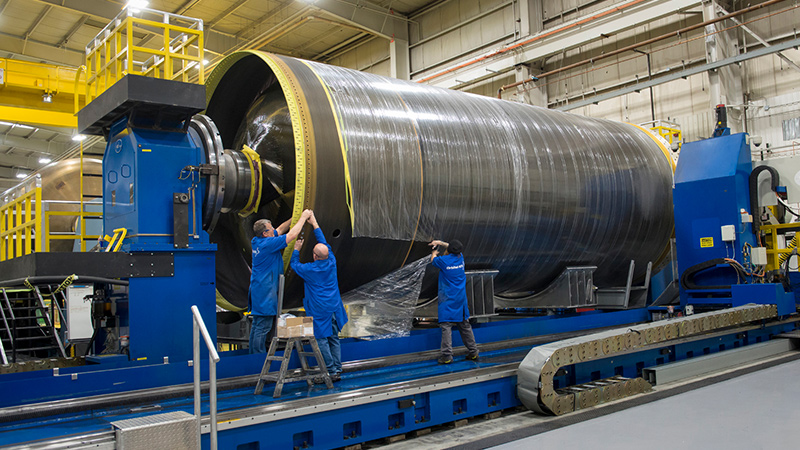Stay Up to Date
Submit your email address to receive the latest industry and Aerospace America news.
Rocket with Aerojet Rocketdyne engines will join competition for U.S. national security launches
COLORADO SPRINGS, Colo. — Orbital ATK on Monday announced that the rocket it is developing primarily for U.S. military and other government launch contracts will be called OmegaA and that its upper stage will be powered by two RL10C engines built by Aerojet Rocketdyne.
Virginia-based Orbital ATK began development of OmegaA in 2015 with U.S. Air Force funding under the Evolved Expendable Launch Vehicle program, or EELV. Until the announcement at the Space Symposium, the company had called the rocket the Next Generation Launch system. The capitalized letters in OmegA are intended to evoke the company’s initials, O-A.
Orbital ATK says the announcement is meant to put it on a better competitive footing against SpaceX, and United Launch Alliance, a joint venture between Boeing and Lockheed Martin, for launch contracts under the EELV program begun by the Air Force in the 1990s to guarantee launches for government and Defense Department spacecraft.
“We don’t want to be the dark horse anymore, we don’t want to be flying under the radar, so we took the wraps off,” spokesman Barron Beneski says.
Orbital ATK is on track to ground test OmegA’s propulsion in 2019 and test fly the rocket in 2021, he says. The OmegA consists of solid rocket motors stacked on top of one another and topped by RL10C engines.
“For national security launches you need to do some fine orbital injection” with these liquid propulsion engines, Beneski says.
The OmegA faces several preliminary design reviews before the ground tests the company has targeted for 2019. If all goes as planned, the Air Force could certify the OmegA for launches in 2022 and the heavy version flights could begin in 2024.
OmegA will be aimed mainly at national security launches, but not exclusively.
“We will also be talking to NASA for the opportunity to launch science missions; we will talk to companies about launching satellites,” Beneski says. “We’re one of the country’s leading satellite manufacturers. We can go to a customer and say ‘we’d like to build your satellite and we can also launch it for you.”
Orbital ATK’s intermediate class OmegA will be launched with a first stage CASTOR600 solid rocket motor, and the company aims to also construct a heavy lift version with a more powerful CASTOR1200 solid rocket motor, both of which will be constructed in Promontory, Utah. The CASTOR600 is a two-segment solid rocket motor with the segments stacked on top of each other.
“We’ve already discussed the vehicle with a number of commercial customers and they have expressed interest,” says John Steinmeyer, director of space launch business development at Orbital ATK.
Northrop Grumman is awaiting regulatory approval to complete the acquisition of Orbital ATK. Beneski said Northrop Grumman is not involved with the OmegA project.
In the Orbital ATK photo at top, workers install the fastener on the OmegA first stage solid rocket motor.
About Tom Risen
As our staff reporter from 2017-2018, Tom covered breaking news and wrote features. He has reported for U.S. News & World Report, Slate and Atlantic Media.
Related Posts
Stay Up to Date
Submit your email address to receive the latest industry and Aerospace America news.




